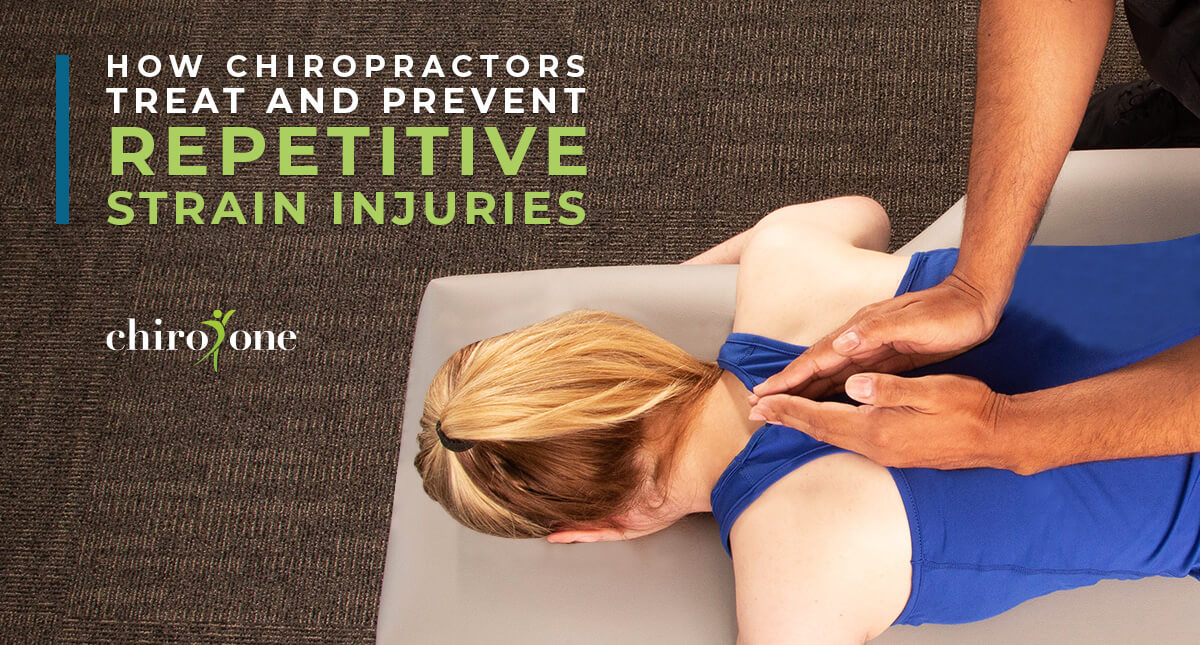Living with the Pain of an Accident or Injury?
Take the first step toward relief.
Overview
More than 63 million Americans sustain an injury each year. Chiropractic care can help alleviate pain from accidents and injuries by reducing inflammation and swelling. It can also help you regain your range of motion and mobility.
What Types of Accidents & Injury Pain Can Chiropractic Care Treat?
Chiropractic care can treat the pain, inflammation, mobility impairments and joint restriction from of a wide range of injuries, including:
- Strains – an injury to muscles or tendons
- Sprains – an injury to the ligaments and capsule of a joint in the body
- Whiplash – a neck injury due to forceful, rapid back-and-forth movement of the neck
- Overuse injuries – sports-related microtraumas resulting from repetitively using the same parts of the body, often because of overtraining
- Restricted mobility – limitations within the musculoskeletal system that make it difficult to move the way you should (or want to)
- Headaches – headache pain can occur for weeks, even months, after a neck or head injury
- Disc injuries – including herniated, bulging, or ruptured discs in the back and/or neck
- Back and neck pain – including muscle strains and spasms and spinal imbalances
- Shoulder & elbow pain – such as tennis/golfer’s elbow
- Knee injuries – including Runner’s Knee
Chiropractic care can minimize the damage and recovery time from accident and injury trauma. A study published in Pain Magazine found that patients who saw chiropractors were over 60% less likely to fill an opioid prescription.
Is Your Accident or Injury Pain Chronic Pain?
Doctors categorize pain in these three ways:
- Acute postural pain: typical with an accident or injury, this pain comes on suddenly and usually lasts a few days to a few weeks
- Subacute pain: this type of pain can appear suddenly or persist after an injury, and typically has been present 4 to 12 weeks (about 3 months) at the time of diagnosis
- Chronic pain may come on quickly or slowly, lasts longer than 12-weeks, and occurs daily – to the point of disrupting your life
Chiropractic care is effective for treating pain at all stages – acute, subacute, and even chronic pain. Left untreated, some types of accident or injury pain can become chronic. If you’re experiencing musculoskeletal pain as the result of an accident or injury, Chiro One chiropractic care can help you find relief.
Common Causes
Common Causes of Accident & Injury Pain
The doctors at Chiro One can treat pain and inflammation from a wide range of causes, including:
- Sports injuries
- Overuse injuries
- Car accidents
- Slip and fall injuries
- Injuries from poor ergonomics – lifting, twisting, bending
Risk Factors
Common Risk Factors for Accident & Injury Pain
While a slip, fall, or other accident can happen to anyone, there are several factors that can put you at risk for experiencing an injury or ongoing pain as a result.
Poor Nutrition
Research shows that poor nutrition could increase the risk of sustaining a sports injury, even in healthy adolescents
Stress, Poor Posture & Lack of Activity
These can cause weakened muscles, spinal imbalances and muscle tension which interferes with flexibility, co-ordination and fluidity of movement, increasing the risk of injury
Lack of Sleep
A 2021 study in Current Sports Medicine Report showed that getting less than 7 hours of sleep for more than two weeks at a time increase your risk of musculoskeletal 1.7 times
When to Seek Treatment
When to Seek Treatment for Accident & Injury Pain
While we believe all pain should be evaluated, accident or injury pain that checks these boxes could be serious and is likely to require care. Consult a doctor if:
- Your pain is severe or unrelenting. It’s normal to experience pain with any injury. However, the severity should decrease as you heal. If it doesn’t improve or respond to medication, it may require immediate care.
- You experience swelling or visual deformities.
- You have difficulty moving. That includes an inability to walk, run, lift objects, or perform everyday activities like dressing or grooming yourself.
Headache/head pain after an accident should always be considered serious. Seek medical care immediately if you experience severe head pain or blurred vision following an accident or head injury.
At Chiro One, we don’t believe anyone should have to live with pain. If the pain of an accident or injury is disrupting your life, chiropractic care from Chiro One can help. Learn more about how we diagnose pain, and what to expect at your first chiropractic appointments.
Tips for Preventing Accident & Pain
- Maintain flexibility
- Strengthen your core
- Use proper technique
- Use the proper equipment for your size and ability
- Take time to rest
- Ensure proper healing of a previous injury
- Be aware of your surroundings
- Perform regular exercise to support good balance
- Keep walkways clear of hazards
When your posture or ergonomics are poor, even simple movements can result in injury. When lifting or carrying a heavy object remember to:
- Keep a wide base of support. Your feet should be shoulder-width apart, with one foot slightly ahead of the other (karate stance).
- Squat down, bending at the hips and knees only. If needed, lift from a half-kneel (one knee on the floor).
- Practice good posture. Look straight ahead, back straight, chest out, shoulders back.
- Slowly lift by straightening your hips and knees (not your back); don’t twist as you lift.
- Hold the load as close to your body as possible
- Use your feet to change direction, taking small steps.
- Lead with your hips as you change direction. Keep your shoulders in line with your hips as you move.
- Set down your load carefully, squatting with the knees and hips only.
“I was thinking that I never could be the same productive person as I was in the past until I found Chiro One Wellness Centers…the doctor and staff are WONDERFUL! Today I feel like a new person. Thanks!”
– Amy E.
Find Relief with Help from Chiro One
Chiro One’s gentle chiropractic care delivers strong patient outcomes with exceptional levels of patient satisfaction. Here’s how Chiro One’s non-surgical, drug-free approach effectively treats the leading causes of accident and injury pain:
Thorough Upfront Evaluations
To assess your physical health, understand your daily routine and goals
Gentle Chiropractic Adjustments
To relieve pain and improve joint mobility and function
In-Clinic Therapies
To help you build strength, improve your range of motion, flexibility and balance, anddevelop muscle memory for longer lasting results
New Patient Offer
Exclusions ApplyChiropractic Evaluation
- Diagnostic Exam
- Consultation
- Personalized Care Plan Recommendation


